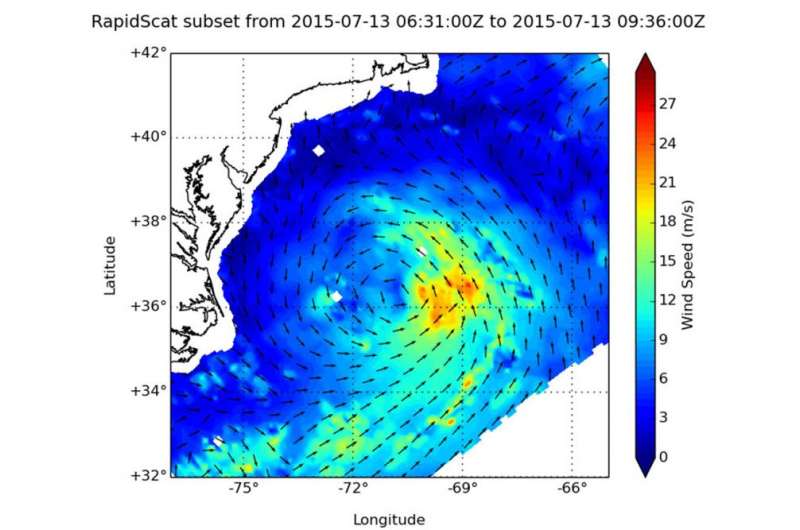RapidScat measures winds of Atlantic Tropical Storm Claudette

The RapidScat instrument that flies aboard the International Space Station measured the winds of the third Atlantic Tropical Storm of the season.
RapidScat gathered surface wind data on the newborn Tropical Storm Claudette on July 13 from 6:31 to 9:36 UTC (2:31 a.m. to 5:36 a.m. EDT). RapidScat data showed that former System 92L had sustained winds near 24 meters per second (m/s) (53.6 mph/ 86.4 kph) in its eastern quadrant, and winds to 18 m/s (40.2 mph/64.8 kph) from the northern to southern quadrants. Winds in the western quadrant were 6 m/s (13.4 mph/21.6 kph) or less.
At 5 a.m. EDT on July 15 (0900 UTC), the center of Tropical Storm Claudette was located near latitude 40.1 North, longitude 63.3 West. That's about 310 miles (500 km) south of Halifax, Nova Scotia, Canada. Maximum sustained winds have decreased to near 45 mph (75 kph). The estimated minimum central pressure is 1004 millibars.
Claudette is moving toward the northeast near 20 mph (31 kph) and a northeast to north-northeasterly motion with some increase in forward speed is expected during the next day or so, according to the National Hurricane Center. On the forecast track, the center will move southeast of Nova Scotia later on July 15 and approach Newfoundland on July 15.
Slow weakening is forecast, and Claudette is expected to become a post-tropical cyclone later tonight, July 14, and to dissipate by July 15, Wednesday night.
Provided by NASA's Goddard Space Flight Center




















